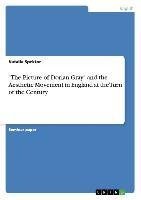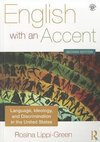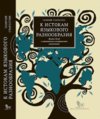
-
 Anglický jazyk
Anglický jazyk
"The Picture of Dorian Gray" and the Aesthetic Movement in England at the Turn of the Century
Autor: Natalia Spektor
Seminar paper from the year 2007 in the subject English Language and Literature Studies - Literature, grade: 2, University of Cologne (Englisches Seminar), course: Proseminar B: London Past and Present: Literary and Cultural Heritage of a Metropolis, 16... Viac o knihe
Na objednávku, dodanie 2-4 týždne
14.76 €
bežná cena: 16.40 €
O knihe
Seminar paper from the year 2007 in the subject English Language and Literature Studies - Literature, grade: 2, University of Cologne (Englisches Seminar), course: Proseminar B: London Past and Present: Literary and Cultural Heritage of a Metropolis, 16 entries in the bibliography, language: English, abstract: There are some famous writers at the end of the 19th century who are often mentioned as "decadent". They have asserted the superiority of beauty and pleasure over all other considerations. Oscar Wilde's novel The Picture of Dorian Gray presents the aestheticism and the hedonist way of living. The novel anticipates developments and structures of society of that time. The importance of Dorian's experiences refutes the decadent theories which are described in the Yellow Book that enthralls the protagonist. The novel as a whole can be seen as a psychological study which analyzes the gradual debasement of Dorian's nature. At the end of the story he is responsible for every vice and crime including murder.
The author shows that on the one hand pleasure and beauty are the highest goods, on the other hand he argues that they also bring death and crime. The task of this research paper is to analyze the mentioned contradiction and the influence of the Aesthetic movement on the novel as well as Oscar Wilde's view of art.
I would like to begin with a brief survey of the social and intellectual background at the end of the 19th century, exploring the major art movements of that time and how far they affect Wilde's work. Afterwards his main principles of Aestheticism and their reflection in the novel are analyzed as well as Dorian's life under the influence of the hedonist model.
Oscar Wilde's novel The Picture of Dorian Gray reveals the contradictions of Wilde's relationship with the decadent trends of that time. He adopts and proclaims their esthetical and literary views, but the flippant amoralism that he sometimes parades so defiantly is belied by the final catastrophe descending upon his hero as a result of his obvious moral degradation. The novel shows that man's chief purpose in life can not be seeking pleasure. To be good is more important than to be beautiful. Though in the preface to his novel Oscar Wilde declares that all art is quite useless, the novel itself proves the opposite. The tension between the aesthetic (Art) and the moral (Life) is the focus of the novel. In setting a portrait, a work of art, at the center of the action, Wilde affects the interplay of natural perception and moral judgment in the novel.
The ideal of art for art's sake was proclaimed by Wilde but hardly ever consistently put into practice.
- Vydavateľstvo: GRIN Verlag
- Rok vydania: 2009
- Formát: Paperback
- Rozmer: 210 x 148 mm
- Jazyk: Anglický jazyk
- ISBN: 9783640319565




 Nemecký jazyk
Nemecký jazyk 
 Ruský jazyk
Ruský jazyk 




